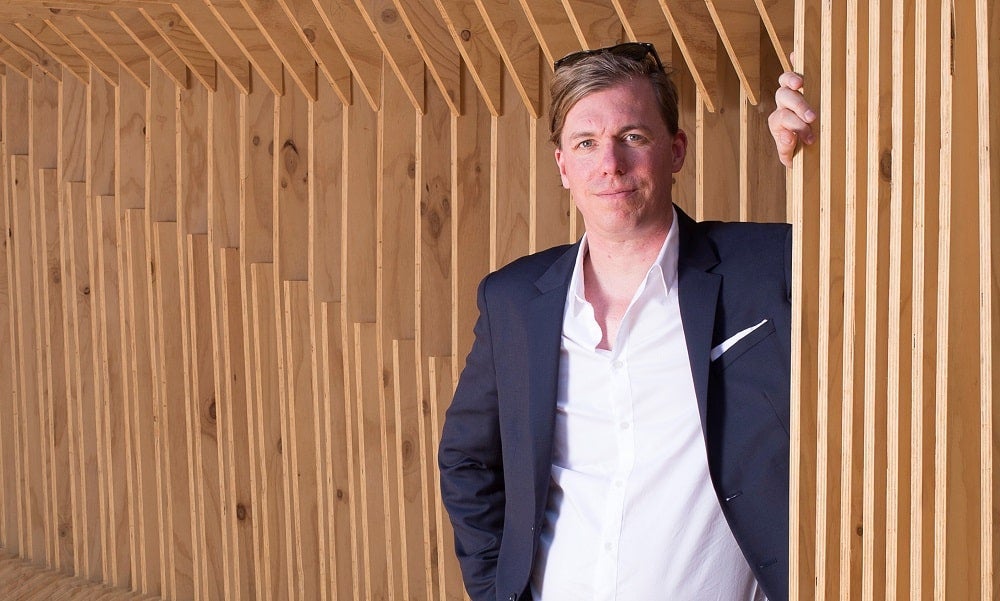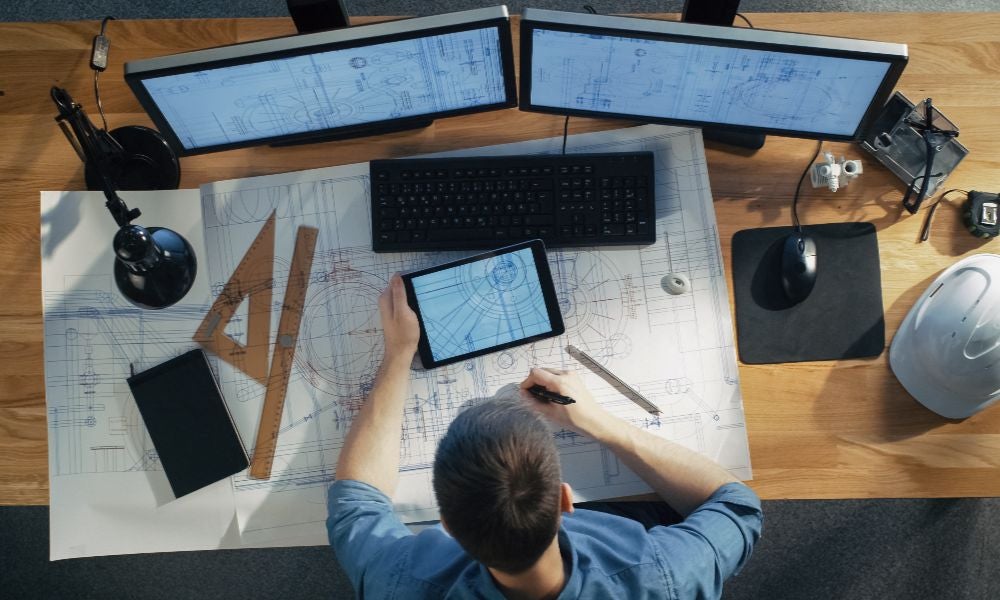How the AI revolution is reshaping architecture’s frontlines
While architecture firms are gradually adopting AI to automate routine tasks, this raises challenging questions about the future of careers, strategy and client value
Professional services firms across sectors face a question that transforms entire industries: what happens when artificial intelligence can perform the work that traditionally trains new professionals? Law firms watch AI draft contracts, accounting practices see software handle tax preparation, and consulting houses deploy algorithms for market analysis. This shift forces leaders to rethink career development, business models, and value propositions. Architecture firms provide a window into how professional services navigate this transformation while preserving the human elements that clients value most.
The architecture sector specifically reflects a broader trend facing organisations that deliver a range of professional services. According to the Royal Institute of British Architects, AI adoption in practice stands at 41%, even though AI only arrived in the form of tools seen as accessible to non-specialist users a little over one year ago. However, the American Institute of Architects found regular, integrated usage remains limited, with just 6% of architects using AI regularly, and only 8% of firms have rolled out AI solutions in a meaningful way – though another 20% are actively working to implement them.

However, things are changing rapidly, and industry-wide surveys paint a picture of experimentation and recognition of AI’s broader potential. A global survey found that about 46% of firms are currently using AI tools, with another 24% planning to adopt them soon; notably, 60% of adopters are self-teaching AI, underscoring a grassroots drive to build capability despite limited formal guidance. Firms are gaining tangible benefits from experimentation too – in some cases, reducing project turnaround times by up to 30%, trimming energy use by 25%, and elevating client engagement through faster visualisation and design iteration. Industry leaders recognise the importance of this, and 76% of architecture, engineering, construction and operations organisations are planning to increase their investment in AI and emerging tech during the next three years.
Redefining professional roles: From action tasks to decision-making
The importance of this transformation cannot be overstated, according to industry experts. Professor M. Hank Haeusler from UNSW Sydney’s School of Built Environment said the foundation for understanding AI’s impact on professional services lies in recognising the fundamental distinction between different types of work. Prof. Haeusler explained that professional architect tasks can be divided into two categories: action tasks and decision tasks. This classification proves critical for determining which roles face automation and which remain distinctly human.
“Normally, early-career or mid-level employees are commissioned to focus on action tasks and not decision tasks,” explained Prof. Haeusler, a researcher and educator in computational design and architectural manufacturing who has authored 150-plus academic publications.“ That means these employees will be given something like a design brief, and then they have to execute it and draw it. And the risk, of course, is that these things can be more easily automated through an AI than decision tasks.”

Action tasks represent the routine, executable work that has traditionally formed the foundation of entry-level positions across professional services. These include drafting documents, creating basic designs, processing standard forms, and executing predetermined procedures. The standardised nature of these tasks makes them particularly susceptible to AI automation.
Decision tasks, conversely, require human judgment, contextual understanding and relationship management. “So, a decision about whether something meets the expectations of the client or not is probably more on a higher-level, strategic consideration,” Prof. Haeusler noted. These tasks involve aesthetic choices, ethical considerations, client relationship management and strategic planning – areas where human intuition and emotional intelligence remain irreplaceable.
Andy Watts, Head of Design Technology at Grimshaw, observes similar patterns from industry practice. “AI works around the periphery of what we do at the moment. It helps us with processes like base image generation and conceptualising ideas, but never with the final output. Similarly, it helps us with report writing, bid writing and those kinds of processes,” said Mr Watts, who leads the practice’s global design technology team, overseeing digital disciplines such as computational design, extended reality, urban computation, applications development and environmental performance.
Learn more: How leaders in the AEC industry can drive digital transformation
He emphasises the strategic distinction between automatable and human-centric work. “Obviously, with any of the repetitive and mundane tasks that fall under the design process, whether it’s drawing or documenting. Those processes are ripe for AI because they are repetitive. They are the same on every project in theory. So, they’re the things that actually we can automate, and AI becomes part of that automation.”
As AI increasingly takes on these tasks, he said Grimshaw is deliberately focusing on preserving human involvement in areas where this adds unique value. “Think about ideation, taking a brief and how to respond in a new, innovative, creative, inspiring way. That’s the work we want to hold on to,” he explained.
Preserving human-centred design: Beauty through ingenuity
The challenge for architecture firms lies in identifying and protecting distinctly human capabilities while leveraging AI for enhanced productivity. Grimshaw’s approach, as articulated by Mr Watts, centres on a clear value proposition: “I gave a talk within Grimshaw about a year ago, and we’d recently relaunched our vision for the practice. And our vision boiled down to ‘beauty through ingenuity’. Beauty and ingenuity are very human qualities,” said Mr Watts, who explained that this philosophical stance drives practical decisions about AI integration.
“We said, ‘Okay, those are the things that we want humans to do, and everything else around this, like repetitive tasks and processes – that’s what we want automated and what AI should take off our plate, because it’s not intellectually rewarding work. It doesn’t keep our brains fed. The thinking behind the creativity is where we want to retain human intervention and involvement.”
Prof. Haeusler echoed Mr Watts’ perspective from an educational standpoint, emphasising humans’ unique capacity for empathy and ethical reasoning. “Machines are by far better than us at crunching through numbers, understanding complexity and interpreting huge datasets. And humans are far better at understanding the empathic needs and aesthetic wishes of clients, or the ethical dimensions of a design – we could have a week-long discussion about the ethics of something,” he said.
“As humans, we are able to read and understand the context of these moral and philosophical kinds of questions. We are really good at understanding other humans, because we’re human as well. That’s made us such a successful species,” said Prof. Haeusler, who also serves as Director of The ARC Centre for Next-Gen Architectural Manufacturing (Arch_Manu), an interdisciplinary, industry-focused research and training initiative that helps accelerate digital transformation processes within the architecture, engineering, and construction sectors to meet critical sustainability goals.
Organisational transformation: Managing risk and progress
The transition to AI-enabled practice requires careful navigation of competing priorities. Describing the evolving conversation at senior leadership levels within the firm, Mr Watts said this had changed “quite a lot” over the years. “For three or four years running now, I’ve done an AI presentation to our board. The first time I did it, it was a bit of an eye roll with a little bit of scepticism, because the proof wasn’t there yet,” he explained.
The progression reflects broader industry attitudes: “The third year, it was like, ‘Oh, actually, this is now becoming more of an issue.’ And then most recently, when I presented it, it was like, ‘Okay, this is an existential issue now, and it has moved to centre stage.’”
However, organisational readiness remains a challenge within the industry. “The appetite has changed, and there is a much stronger sense that we have to be doing something. There is a recognition that it’s a business imperative, but an understanding of what to do is lacking.”
Subscribe to BusinessThink for the latest research, analysis and insights from UNSW Business School
This gap between recognition and implementation manifests in practical budget decisions and risk management. Developing accurate budget estimates is a challenge because AI technology is moving so fast, while risk management conversations within the firm reflect broader industry tensions. “We had a lively debate there around risk, what is an acceptable level of risk as owners of the business, and what they were willing to accept in terms of what happens with our data,” Mr Watts explained.
These were tempered with conversations around the need for practical implementation to balance experimentation with governance. “We’re trying to strike that balance between risk and progress, because at the moment, we’re trying to mitigate risk, and that’s tightening progress. However, we don’t want to dive full on into experimentation, or we might end up with issues down the line,” he said.
Future business models: Value propositions in an AI-enabled world
The transformation extends beyond operational efficiency to fundamental business model questions. Mr Watts anticipates significant structural changes: “What we will find is that as AI really takes hold, we will see smaller companies with fewer people able to swim in big ponds. They’ll be able to actually take on those projects that historically have required larger teams, because they’ve got a very dynamic, AI-savvy team of architects who are quite agile, and they’ve got a whole load of automation that can help them do the work,” he predicted.
This democratisation effect challenges traditional competitive advantages based on scale and billing models. Lump sum fees and time charge fees, for example, are two current methods of charging for work in the industry; however, Mr Watts sees these becoming less relevant and more focused on the question: “How do you bill for your value proposition?”
The shift toward value rather than service-based positioning represents a fundamental reimagining of professional practice, and Mr Watts said conversations with clients will be less about deliverables and more about quality. “Just thinking this through, it’s more like we are selling a product than we are selling a service, so we will be paid for the quality of product that we are known for,” he predicted.
At a broader industry level, Prof. Haeusler emphasised the strategic imperative for firms to develop coherent AI strategies. “One can point to the risk that, within the next three to five years, any firm that hasn’t really changed its business model to one that incorporates AI will probably falter and will no longer exist. And anyone who thinks they can use the same value proposition of the past ten years over the coming 5-10 years will probably also struggle,” he said.
Instead, he advocates for proactive, strategic thinking around organisational strategy and where AI can add value in this. “Architects are very good at envisioning cities, for example,” he said. “Everything that you see around you has been an idea in somebody’s head before it was manifested. Architects are very good at that process, but not so good at imagining our own future when it comes to our business – most likely because architectural education does not include business education.”
Alternative career pathways: Beyond traditional architecture
This transformation creates opportunities for new professional trajectories within architecture firms. Mr Watts’ role within Grimshaw, for example, is leading a team of specialists in design technology, automation, and visualisation, which reflects changing professional interests and helps the firm respond to market demands.
“Many in my team started out on the traditional architecture career path (myself included). But at some point along the way, I asked myself, ‘Do I want to be an architect, or do I just enjoy solving problems?’ Speaking for myself, I realised solving problems through technology is what I enjoyed.”
Conversations about future careers in the firm have also shifted, with multiple options and pathways available. “As we interview new candidates and graduates, we acknowledge that they can go down the architecture route. But there are alternate paths we can help steer them down. This is something that we properly embrace now as a business – the fact that there isn’t one single path,” he said.

The educational implications of this require a fundamental rethink of professional preparation, according to Prof. Haeusler, who advocates for collaborative human-AI working models: “With the incumbent education pipeline, we train our students on how to collaborate well with other humans in the context of their profession. Yet in future education models, we also need to train them to work really well with machines – as a new co-worker that will play an important role in one’s professional life,” he said.
He emphasises the competitive advantage this creates: “Senior architects who were educated at universities in the 1990s have been exposed to an architectural training that did not consider AI. Yet, they are now in a position to include AI as a part of their daily operation. Hence, there is a need for employees who can bridge that gap, and students trained in collaborative human-AI working models can help senior staff to understand how to work best in the field with AI as a colleague and thus a new type of junior-level work exists.”
Industry collaboration and continuous innovation
The pace of change with AI necessitates ongoing adaptation and learning, according to Mr Watts, who described the complexity of implementation timing as an example of a challenge facing design and architecture firms: “The whole conversation about AI, and even any kind of change management within the architectural industry, is interesting because we’re not a production line. It’s not like we can stop production, retool, and then start again,” he explained.
Project-based work also creates particular challenges. One project within a firm might use an existing process based on an existing era of technologies, and then halfway through the project, switch to another process based on different technologies again, he said. “At what point do we actually retool? Do we introduce AI because, from a pure organisational perspective, we then have to operate multiple technologies and multiple ways of working, because we have got legacy processes and technology mixed with new ones,” said Mr Watts.
Learn more: The ARC Centre for Next-Gen Architectural Manufacturing
This reality explains current AI adoption patterns within the world of design and architecture, he added. “That’s one of the reasons why AI hasn’t properly found a foothold in architecture just yet. We’ve got AI tools like Midjourney and ChatGPT, but they’re kind of sniffing around the edges of what architecture is,” he observed. “Nothing’s really kind of got into the meat of it just yet.”
However, the AI writing is on the architecture wall, and Mr Watts said firms are actively preparing for future capabilities. “We are getting ready because it will happen. We recognise that,” he said. “We’re going back through all of our historic data and trying to apply a level of standardisation to it. Grimshaw has been around for 40 years and we have a rich history, so we’re looking at how we can use this data for training in the future.”
This kind of transformation represents both challenges and opportunities for professionals in the future. “We need to shift to a collaborative model where human creativity and artificial intelligence combine to enhance architectural practice rather than replace human expertise,” he said. “The firms that thrive will be those that successfully navigate this transformation while preserving the essential human elements that define great architecture: empathy, beauty, ingenuity, and the ability to create spaces that truly serve human needs.”
Learn more: The end of the billable hour? How law firms are adapting to AI
The architectural profession stands at a crossroads where technological capability meets human creativity. Prof. Haeusler observed that the path forward requires strategic thinking, continuous learning, and a commitment to preserving the uniquely human aspects of design while embracing AI’s potential to enhance productivity and unlock new possibilities. Success will not depend on avoiding change, but Prof. Haeusler said it will depend on actively shaping how technology serves the goals of creating a built environment in a digital and circular economy and society.
Architecture firms and artificial intelligence FAQ
Q1. How is AI being used in architecture today? AI is used in drafting, visualisation and report generation while human judgment guides design and client decisions.
Q2. What professional services tasks are most likely to be automated by AI? Routine action tasks such as document drafting, form processing and standard designs are most at risk of automation.
Q3. How does AI affect career development in professional services? AI shifts early-career roles from routine tasks toward decision making and new pathways in technology and automation.
Q4. What are the risks and challenges of AI adoption in architecture? Challenges include balancing experimentation with governance, managing data risks, and redefining business models.
Q5. Will AI replace human creativity in professional services? AI cannot replace human creativity, empathy or ethical reasoning, which remain central to client engagement and design quality.
